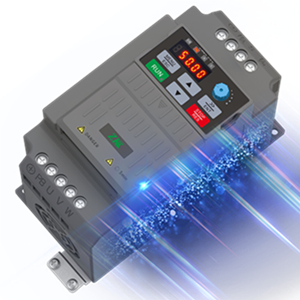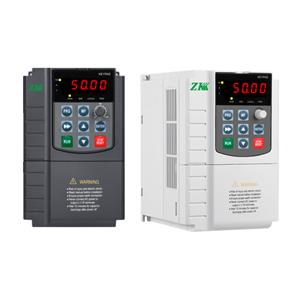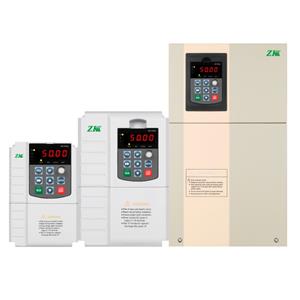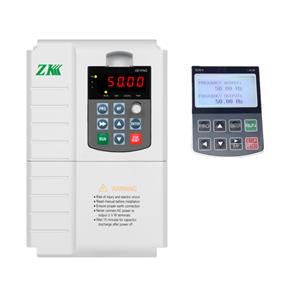Intelligent Fault Detection System of VFDs
Variable Frequency Drives (VFDs) are foundational components in modern power electronics, enabling precise motor speed control while optimizing energy efficiency across industrial systems. However, despite their widespread usage, Variable Frequency Drives (VFDs) face reliability challenges stemming from complex operational environments and faults such as overheating, voltage fluctuations, and mechanical wear. These issues can cause costly unplanned downtimes, decrease productivity, and escalate maintenance expenses. To address these concerns, advancements in Artificial Intelligence (AI) are pioneering intelligent fault detection systems that enhance Variable Frequency Drives (VFDs) reliability through predictive insights, real-time diagnostics, and proactive maintenance practices.
Understanding Fault Detection in Variable Frequency Drives (VFDs)
Traditionally, fault detection in Variable Frequency Drives (VFDs) has relied on basic threshold monitoring or rule-based diagnostics, which interpret abnormalities based on pre-defined parameters. While effective for identifying clear-cut issues, these conventional methods often fail to adapt to dynamic operating conditions, identify subtle fault patterns, or provide a holistic understanding of interconnected system components. This is where AI-driven fault detection systems excel, leveraging cutting-edge technologies such as machine learning, deep learning, and data analytics to establish a robust and adaptive diagnostic framework for Variable Frequency Drives (VFDs).
The Role of AI in Fault Detection
AI-driven fault detection systems revolutionize fault detection by enabling the analysis of extensive volumes of real-time and historical operational data gathered from sensors embedded within Variable Frequency Drives (VFDs). By employing sophisticated algorithms, AI-driven systems identify patterns, correlations, and anomalies that may signal impending system failures. Key AI-driven capabilities include:
1. Predictive Maintenance
AI-driven fault detection systems facilitate predictive maintenance by detecting early signs of equipment failure based on data trends related to vibration, temperature, current, and voltage levels. This transition from reactive maintenance (fixing faults after they emerge) to proactive maintenance (preventing faults before they occur) decreases downtime, enhances system reliability, and optimizes operational efficiency.
2. Anomaly Detection
Advanced anomaly detection algorithms powered by AI-driven systems identify deviations from normal operating conditions. For instance, deep neural networks can learn baseline Variable Frequency Drives (VFDs) behavior and flag subtle variations that indicate potential faults—even before they surpass predefined thresholds.
3. Fault Diagnosis and Classification
Machine learning models such as support vector machines (SVMs), k-nearest neighbors, or decision trees can accurately diagnose faults (e.g., short circuits, insulation failures, or bearing degradation) by analyzing specific data signatures. Rapid fault classification empowers maintenance teams to pinpoint root causes and implement corrective measures promptly.
4. Adaptive Learning
Variable Frequency Drives (VFDs) operate under diverse conditions—different motor types, varied environmental factors, and dynamic loads. AI-driven fault detection systems excel by continuously improving their diagnostic precision as they adapt to unique operating scenarios. This adaptability makes them more effective than static, rule-based diagnostic methods.
Advantages of AI-Driven Fault Detection Systems
The integration of AI-driven fault detection systems into Variable Frequency Drives (VFDs) unlocks several transformative benefits:
1. Enhanced Reliability
AI-driven systems foster a deeper understanding of system health, enabling operators to anticipate and prevent faults, ensuring uninterrupted operations.
2. Reduction in Costs
By minimizing downtime and optimizing maintenance schedules, AI-driven systems decrease expenses associated with repairs, replacements, and productivity losses.
3. Real-Time Monitoring
With instant alerts and real-time diagnostics, AI-driven systems empower quick responses to emerging issues, reducing mean time to recovery (MTTR) and operational disruptions.
4. Scalability
AI-driven solutions can be deployed across multiple Variable Frequency Drives (VFDs) within interconnected systems, enabling centralized monitoring and diagnostics in even the most complex industrial environments.
5. Sustainability
Improved reliability and energy efficiency through AI-driven systems reduce material and energy waste, supporting eco-friendly industry practices and sustainability objectives.
Challenges and Future Directions
Despite their advantages, integrating AI-driven fault detection systems into Variable Frequency Drives (VFDs) presents obstacles, most notably in data quality and availability. Incomplete or noisy datasets can undermine accuracy, highlighting the need for robust data collection systems. Furthermore, retrofitting legacy Variable Frequency Drives (VFDs) with AI capabilities might require investments in sensors, computing infrastructure, and connectivity upgrades.
Looking ahead, AI-driven fault detection systems will likely evolve alongside IoT (Internet of Things) advancements. IoT-enabled Variable Frequency Drives (VFDs) equipped with interconnected sensors can provide granular, high-resolution data to further enhance diagnostic accuracy and enable smarter cloud-based analytics. Edge computing advancements will allow AI-driven systems to process data locally on Variable Frequency Drives (VFDs) hardware, reducing latency and improving real-time responsiveness. Additional developments in explainable AI (XAI) will make AI-driven diagnostics more transparent, increasing user trust and offering deeper insights into system behavior.
Artificial Intelligence is reshaping the landscape of fault detection in Variable Frequency Drives (VFDs), offering a transformative solution to longstanding reliability challenges. By enabling predictive maintenance, real-time diagnostics, anomaly detection, and adaptive learning, AI-driven fault detection systems elevate operational continuity, lower costs, and foster sustainable industrial practices. As technology progresses, the fusion of AI-driven systems with IoT and edge computing will unlock even greater possibilities, driving smarter, more resilient industrial systems. For industries reliant on motor-driven applications, embracing AI-powered fault detection in Variable Frequency Drives (VFDs) is not merely a technological upgrade—it is a strategic investment in operational excellence, productivity, and sustainability.




